
This is a Cobbler's Anvil. He would use it to hold a shoe as he
worked on it. |
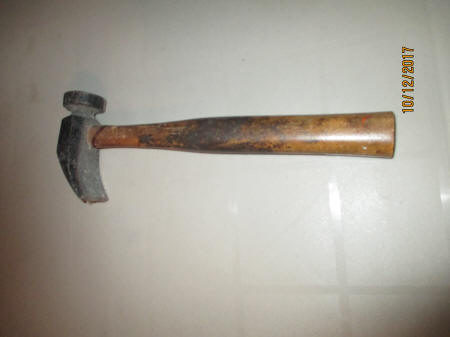
This is my grandfather's cobbler's Hammer. |
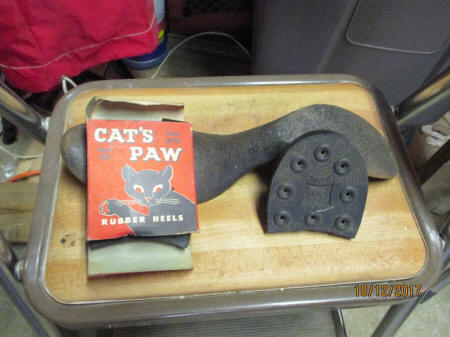
Need new heels? Put the shoe on the anvil, then pound 8 nails in
with a cobbler's hammer. |
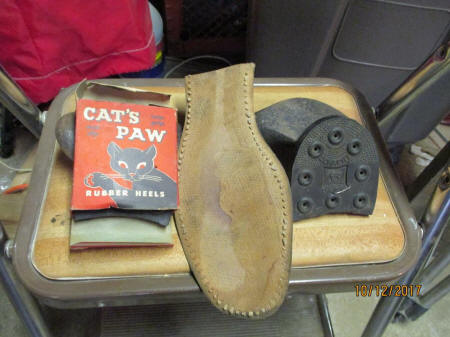
Installing new soles is a lot harder. He had to hand stitch the
sole on to the shoe. |
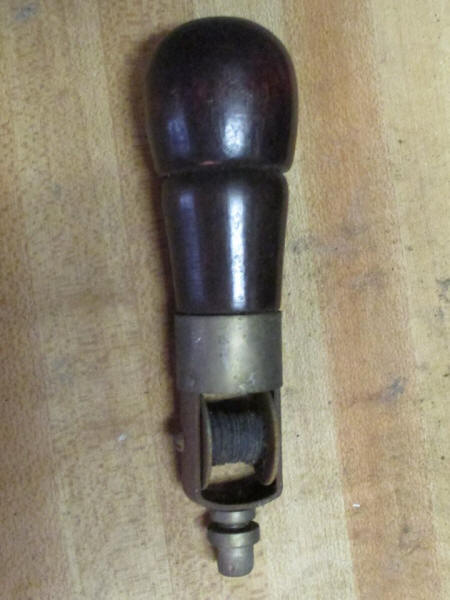
This is the cobblers stitching tool that my grandpa used to put
new soles on shoes. If I knew how to use this tool, I could have
fixed my bowling shoes pictured below. |
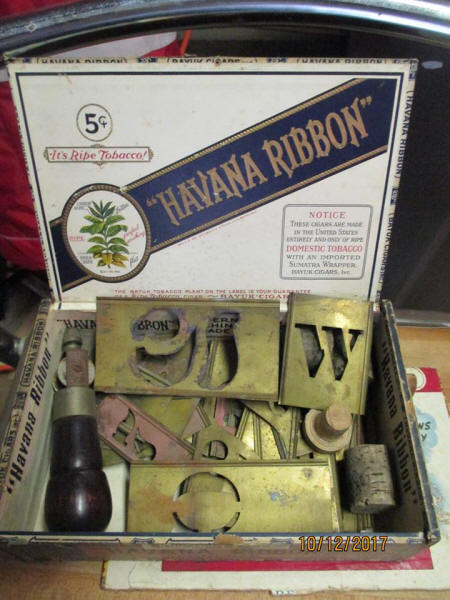
This cigar box contains brass stencils that grandma used to make
signs for the store window. That tool with the handle was used
to stitch soles onto the shoes. |

These are the bowling shoes that I used for 50 years until
the stitches wore out. In the old days, bowling shoes had a
combination of rubber and leather soles. Shoes for right handed
bowlers had an all leather sole on the left shoe and a rubber
sole with a leather toe on the right shoe. That allowed the
bowler to slide on the leather surfaces then use the rubber part
for stopping. |

This is the cobblers knife that was used to cut leather. |
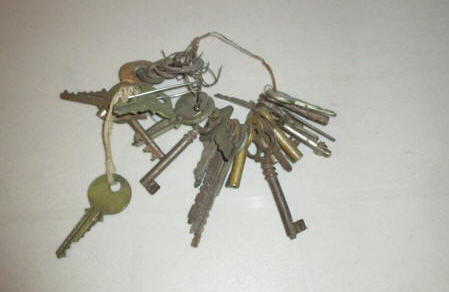
These were keys to
grocery store
on Paulina Street in Chicago. I could not find a name for
the all purpose tool on the right. You can use it as a hatchet,
pry bar and hammer. I'll call it his HPBH tool. |
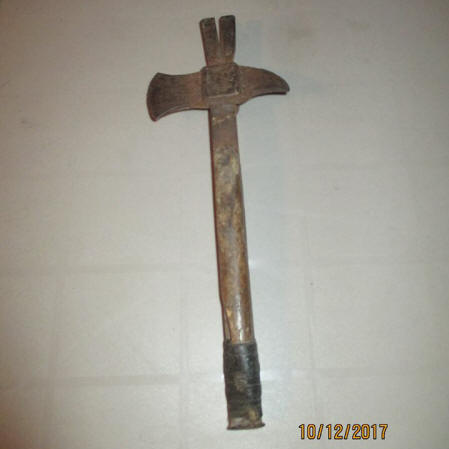 |
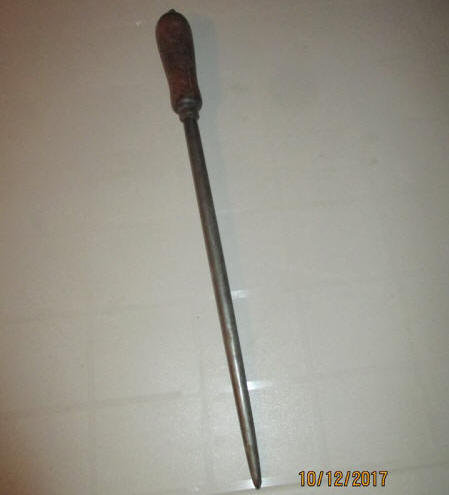
This tool is 18 inches long. |
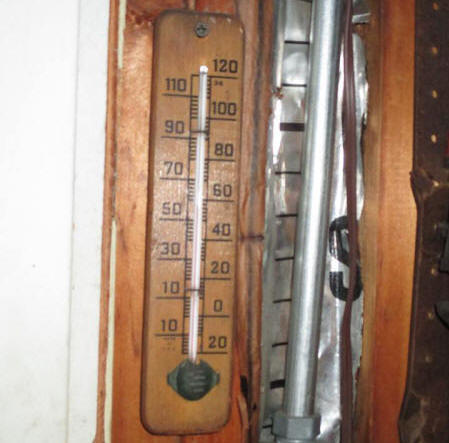
His old wooden thermometer is still working in my garage. |

This is
the scale he had in his grocery store.
|
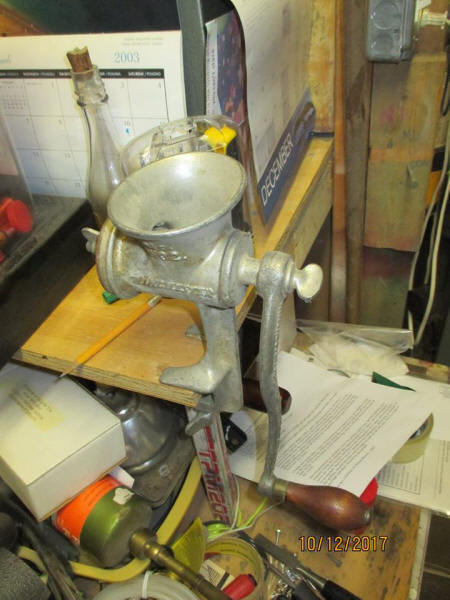
Grandpa made ground beef with this meat grinder. |

This is
the sandstone grinding wheel that he made. My brother Herb
gives it a spin. We used to pedal that wheel as fast as we
could,
|
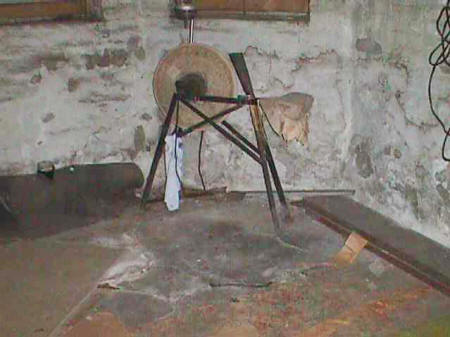
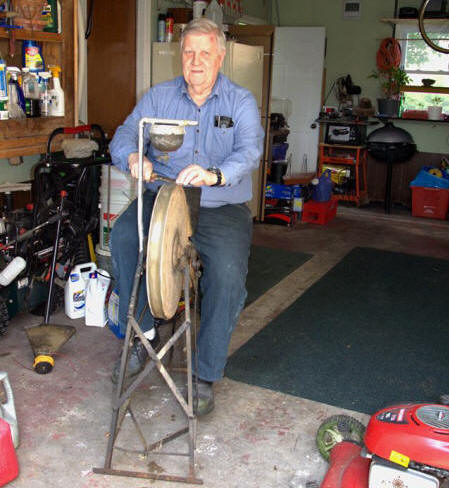 |
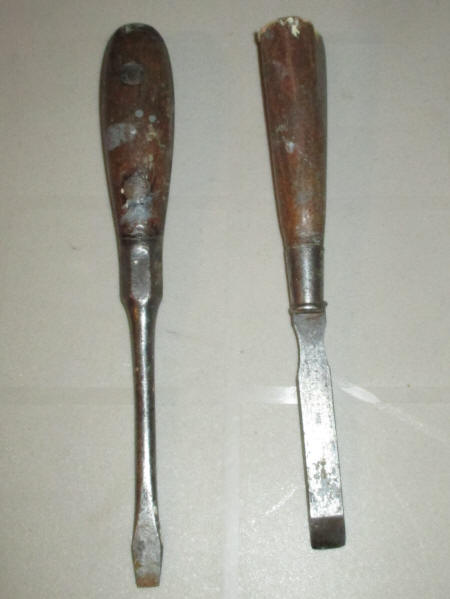
I love using these tools. |

You have to be really strong to swing this pick. |

My grandparents had an ice box in their kitchen in the mid
1940s. He had ice delivered several times a week. On a hot day,
the iceman would toss us a chip of ice. This ice pick was
helpful when you had to move a block of ice. |
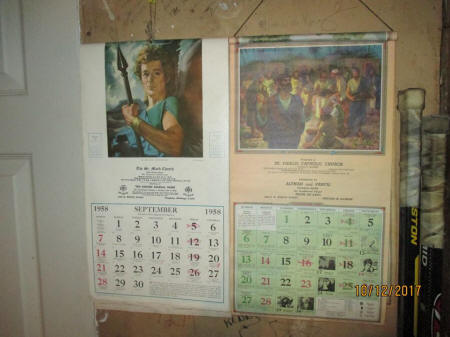
These 1958 church calendars were still hanging in the basement.
1958 was the year I graduated from High school. Notice the fish
printed on every Friday to remind you not to eat meat. St Mark
is where I went to grade school and St Fidalis is where my wife
went to school. |
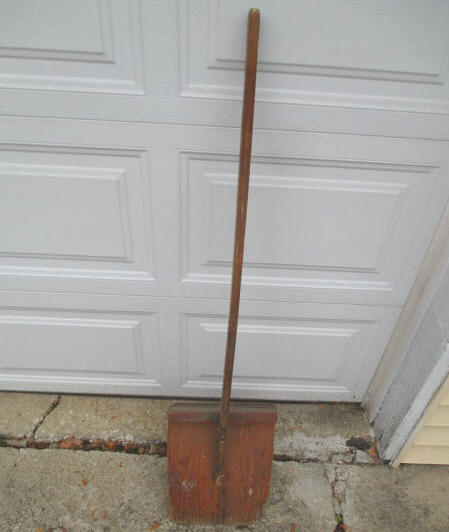
My grandpa made this wooden shovel. |

He made this hand truck that helps me move heavy objects. |
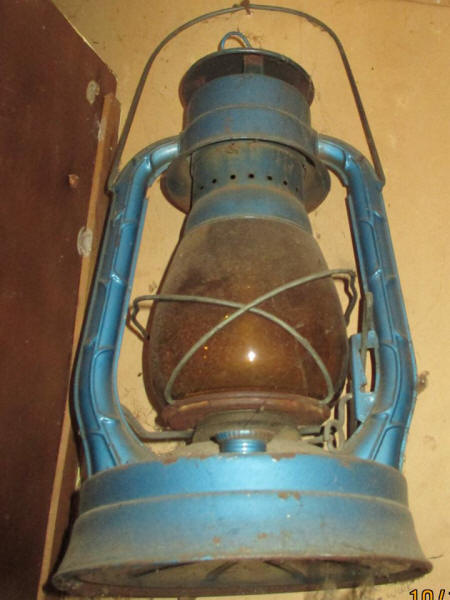
This oil burning lantern is handy when the power goes out. |
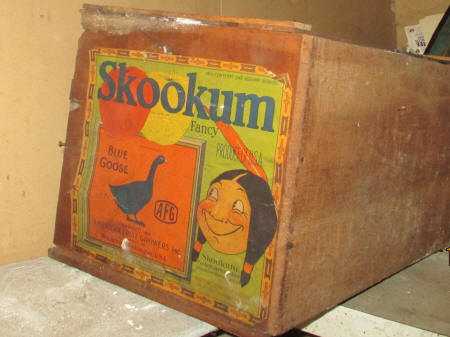
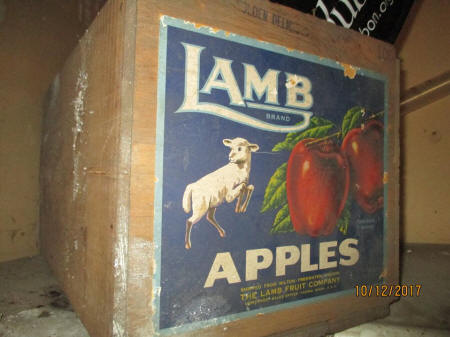
My grandpa had a horse that pulled his wagon to the
Randolph
Street markets where he purchased food to sell in his store. |

I used this ax a few times until the handle broke.
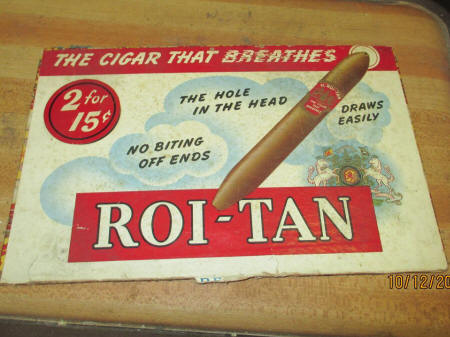
Cigar boxes were frequently used for storage of multiple
items. I still have a few of them in use. |

This is the shovel my Grandpa used to shovel coal into the
furnace that heated his house. You can see how the blade was
worn down by years of sliding on the concrete. |
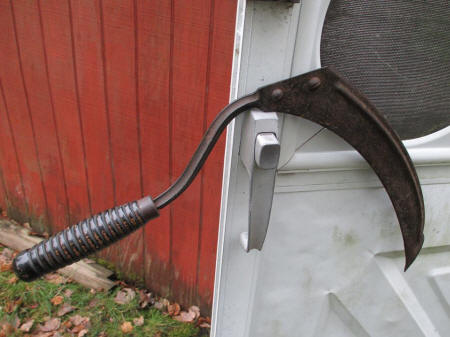
(Above) I use this sickle often when I need to cut some tall
weeds.
(Right) My grandpa used this pitch fork to
pitch hay in the barn to his horse. I use it to remove
dead Hosta leaves in the Fall. |
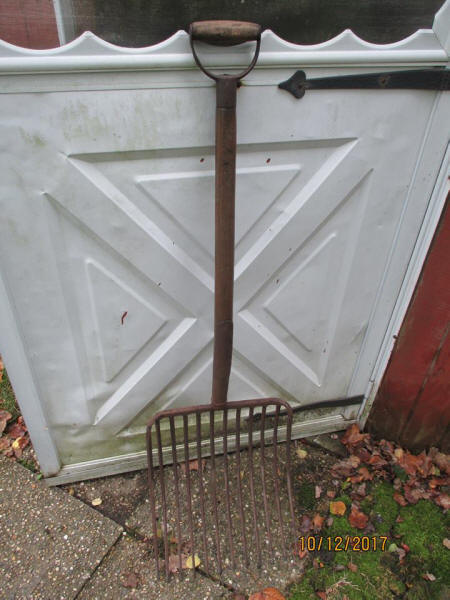 |
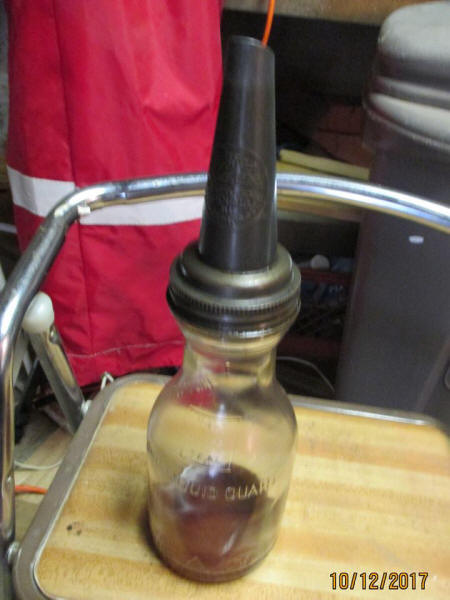
This tool made it easy to pour a quart of oil into your car.
|
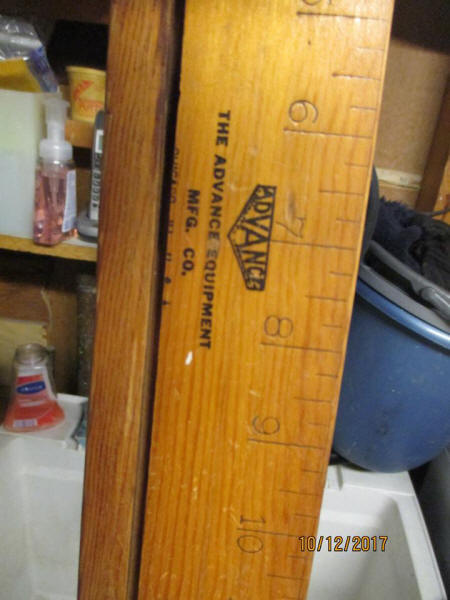
This is a
4 foot ruler that was used to cut wallpaper. |
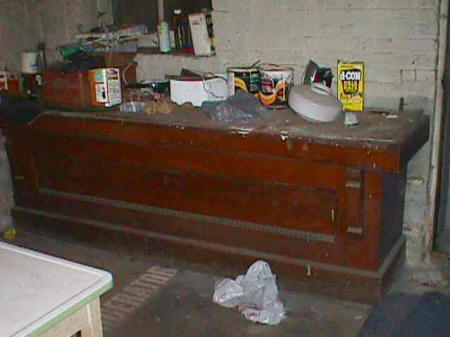
This is the counter from my grandparents' store. My son -n
law Dan moved it and found the block plane pictured in the right
frame. |

I found an antique wooden block plane like this on Ebay for
$43.13 |

This is in an oil burning blow torch. |
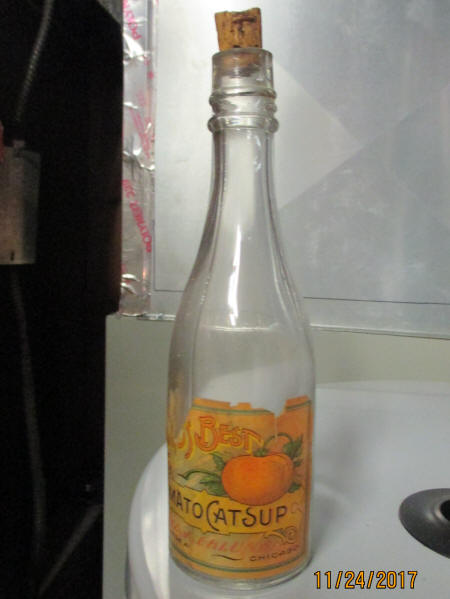
My Mom used ketchup bottles like this as baby bottle for me.
She said that I would toss it out of the crib when I was
finished. |
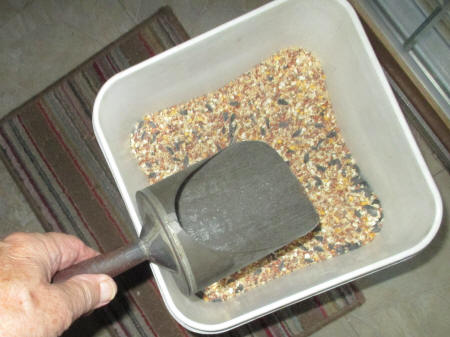
We use this scoop to fill our bird feeders. |
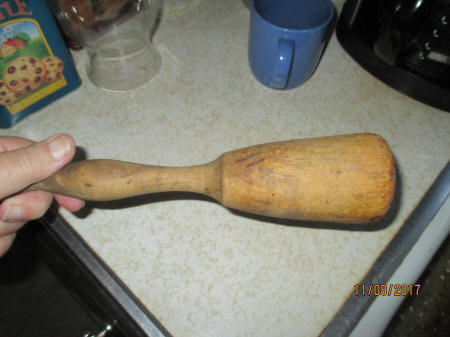
Getting hit with this would hurt a lot more than a rolling
pin. |
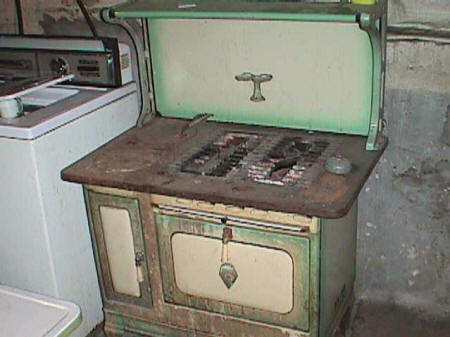
My Grandma slaved on the stove above. It burned gas and wood.
She also washed clothes with the washboard pictured on the
right. My mom had a ringer wash machine that made washing
clothes a lot easier than the wash board, but it still was hard
work putting the wet clothes through the ringer.
|
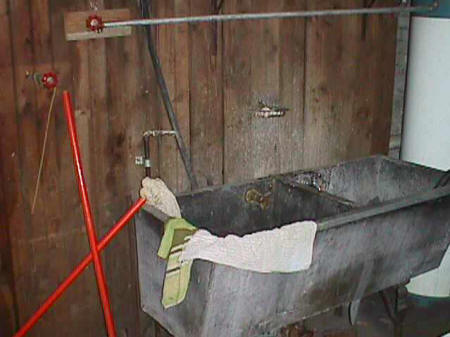 |
|
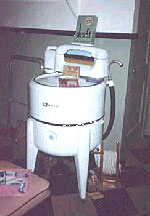 |
 |
|
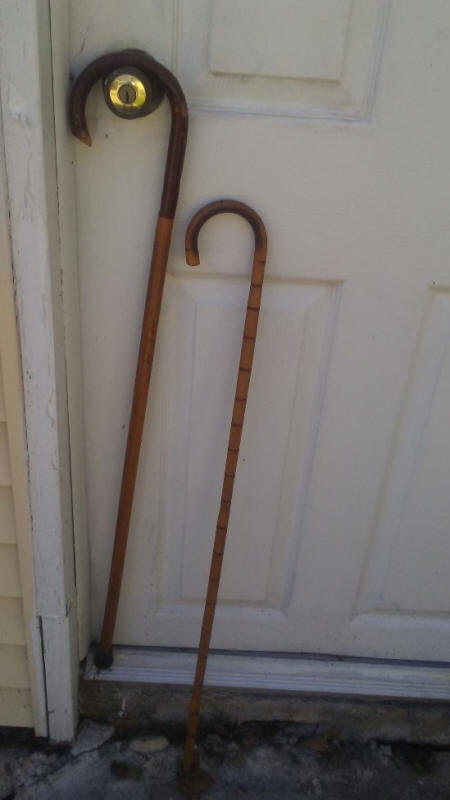
These are Grandpa's canes. I used one of them when I had my
hip replaced in 2005. Our grandson Luke and his friends did a great job
of looking like grandpas for Halloween in 2017.
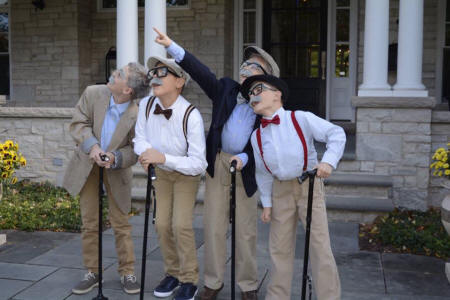 |

(Above) Grandpa bought this cane at the
World's Fair in 1933. A Century of Progress International
Exposition was a World's
Fair registered under the Bureau
International des Expositions (BIE), which was held in Chicago,
as The Chicago World's Fair, from 1933 to 1934 to
celebrate the city's centennial. The theme of the fair was
technological innovation. The fair's motto was "Science Finds,
Industry Applies, Man Adapts". Its architectural symbol was the Sky
Ride, a transporter
bridge perpendicular to the shore on which one could ride
from one side of the fair to the other.
One description of the fair noted that the world, "then still
mired in the malaise of the Great Depression, could glimpse a
happier not-too-distant future, all driven by innovation in
science and technology. Fair visitors saw the latest wonders in
rail travel, automobiles, architecture and cigarette-smoking
robots (yes, really)."[1]
A Century of Progress was organized as an Illinois nonprofit
corporation in January 1928 for the purpose of planning and
hosting a World's Fair in Chicago in 1934. City officials
designated three and a half miles of newly reclaimed land along
the shore of Lake Michigan between 12th and 39th streets on the Near
South Side for
the fairgrounds.[2] Held
on
a
427 acres (1.73 km2)
portion of Burnham
Park,
the $37,500,000
exposition
was formally opened on May 27, 1933, by US Postmaster
General James
Farley at
a four hour ceremony at Soldier
Field.[3][4]
The fair's opening night began with a nod to the heavens.
Lights were automatically activated when the rays of the star Arcturus were
detected. The star was chosen as its light had started its
journey at about the time of the previous Chicago world's
fair—the World's
Columbian Exposition—in
1893.[5] The
rays were focused
on photoelectric
cells in
a series of astronomical observatories and then transformed into
electrical energy which was transmitted to Chicago.[6]
Thanks to Wickipedia for the above information,
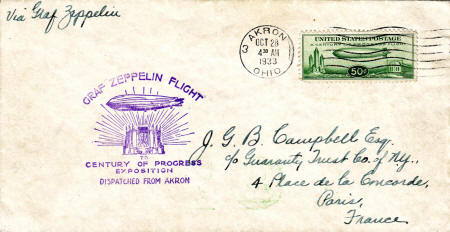
|

 |
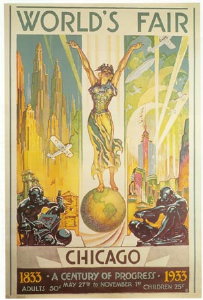
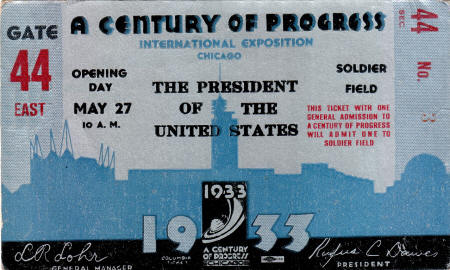

The passengers, including "Zeph" the burro, that rode the Zephyr on
the "Dawn-to-Dusk Dash" gather for a group photo in front of the
train after arriving in Chicago on May 26, 1934. |
 |
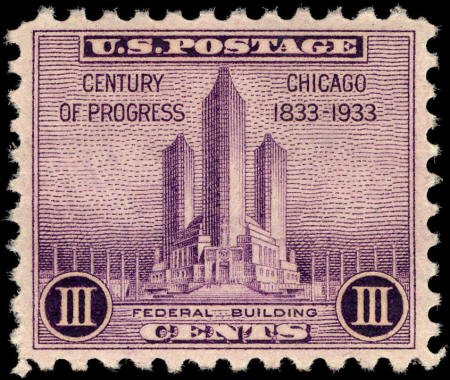 |
|

Mom had a Brownie box camera
|
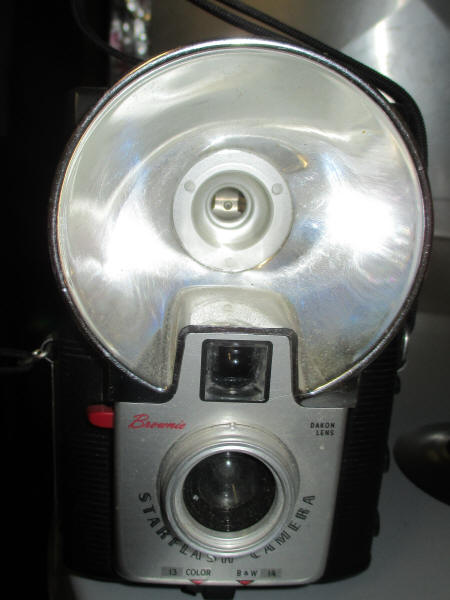
My Uncle Frank bought this Brownie
Starflash Camera that had a Dakon lens.
|
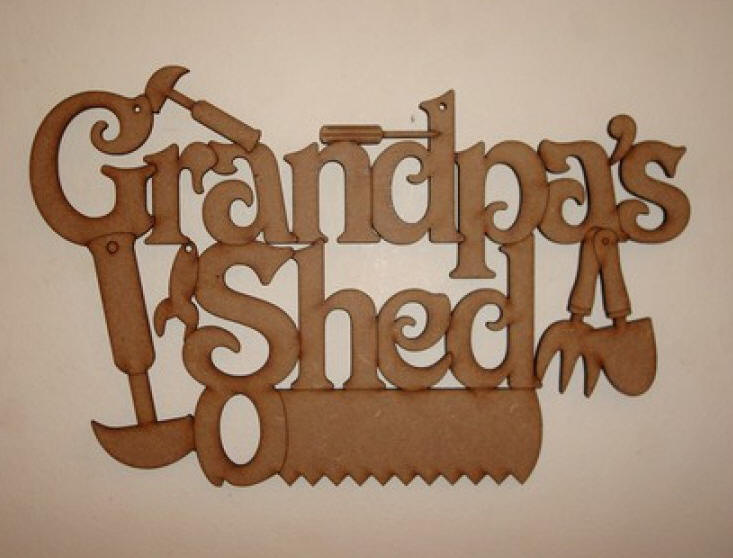














































 To
E-mail Web master, just click here!
To
E-mail Web master, just click here!